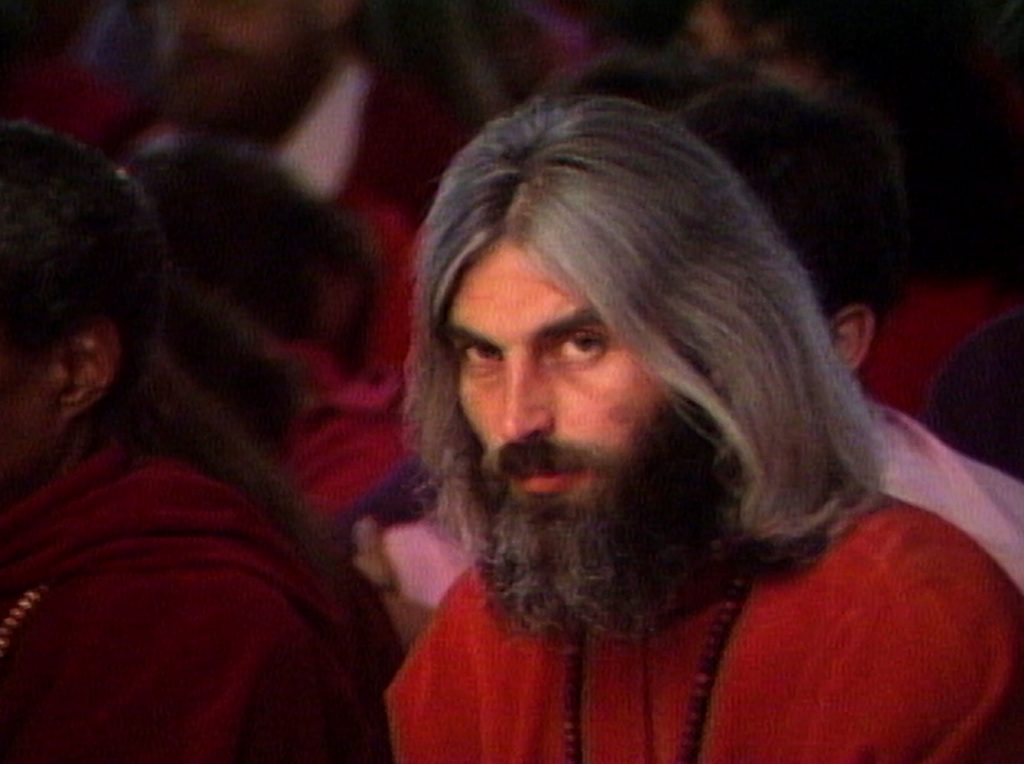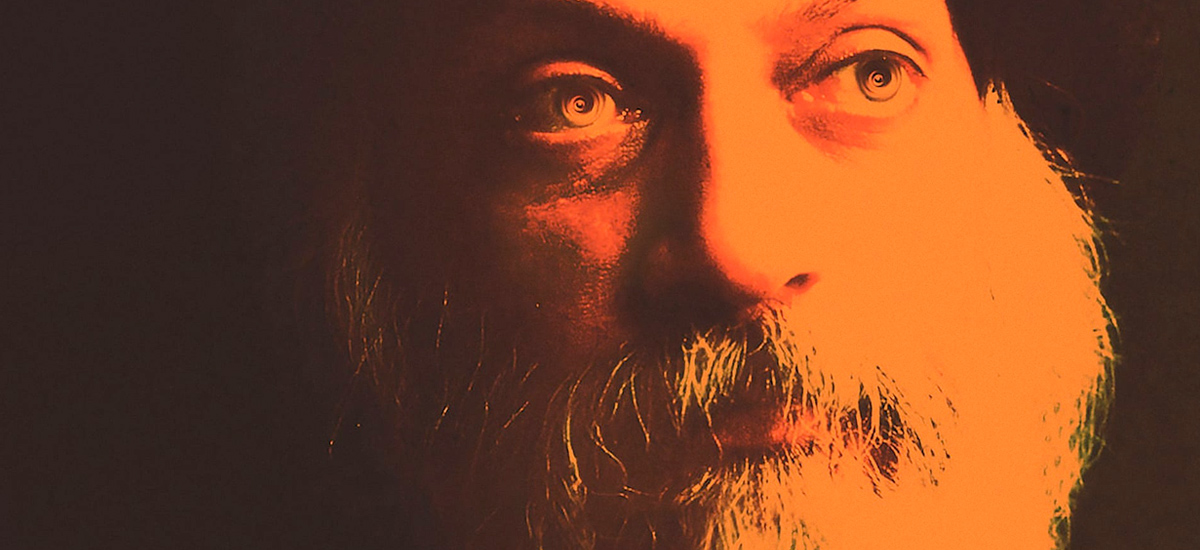Oprah makes a surprise cameo in the new Netflix docu-series Wild Wild Country
.
Still need a little more convincing to watch the series? Is the mere mention of Oprah not enough? In the early 1980s, at her old talk show, she asks a member of her panel about the leader of a blossoming cult: Bhagwan Shree Rajneesh. His followers, known as sannyasins, have just built a functional commune of thousands on deserted Oregon farmland because their guru wanted a city of his own. Harkening back memories of the still recent Jonestown massacre, Oprah asks, “If he commanded his followers to drink poison Kool-Aid do you think they would?”
Directors Maclain and Chapman Way leave that question up for debate as they unveil the almost unimaginable true story of the cult and the commune they construct: Rajneeshparam. The six-part series is a mix of archival news footage and interviews of the people that were directly involved, inside and outside of the cult. The most polarizing character who was interviewed is Ma Anand Sheela, the personal secretary and right hand of Bhagwan. Sheela is cunning, charismatic, and candid in her answers. At times she seems like a victim of circumstances, at others she seems downright maniacal.

While Bhagwan was the spiritual leader of the sannyasins, she was the strategic leader. She decided to start the commune in the United States because she was drawn by the American idea of religious freedom. The cult purchased a large plot of land outside the small retiree town of Antelope, Oregon. Its members, dressed in various shades of red, flock to the site and begin construction.
The cult of Rajneesh is also a corporation, with its product being meditation. Bhagwan blends western capitalism with eastern mysticism to create a doctrine that is modern and attainable. The beliefs he preaches are conveniently vague. The common idea threaded through his lectures is freedom or release, most commonly by disregarding traditional conventions of marriage or religion. Bhagwan simultaneously embraces materialism: he owns several Rolls-Royces and wears diamond watches that would make T-Pain blush.
Once Rajneeshparam is built, there is obvious resistance by the locals in Oregon. Footage is leaked of the meditations, in which naked cult members violently writhe around in a primal state of lust and rage. Sannyasins quickly take over the town of Antelope and have plans on extending their reach further into the county. When followers are violently threatened, Sheela deems it necessary to acquire hundreds of weapons for a town militia. The series discovers how far the cult is willing to go to survive. There are assassination plots, bioterror attacks, fraud schemes, wiretapping scandals, literally every box of the Crazy Cult Checklist is marked off in this series.
Wild Wild Country is handled expertly by Maclain and Chaplain Way, creating a docu-series that handles every facet of the story with poise and precision. It is almost frustratingly objective in its portrayal, constantly causing viewers to seesaw on who to side with. The show is highly recommended. The remaining segment of this review contains spoilers, so please binge the show and come back to this review when the final credits roll.

The broadest theme Wild Wild Country tackles is the general idea of “freedom” in all of its different forms. The clearest is the dichotomy between the normal citizens of Antelope (freedom of solitude) versus the citizens of Rajneeshparam (freedom in community). Before the Rajneesh movement, Antelope was thought of as a quiet respite for retired Americans to live out their last days. The 50 residents were a close community, but the appeal was the peace, the quiet, and the isolation.
On the other hand, sannyasins found freedom by relinquishing themselves to Bhagwan and the community. All the way down to the clothes they wear, they seems to surrender their personal freedoms for a larger, more significant idea of “group freedom”.
The last mayor of Rajneeshparam, Swami Prem Niren (otherwise known as Philip Toelkes), has a different idea on the cult. He describes the community as “a group of crazy individualists who just happened to be organized to build this community because we wanted to do it. We didn’t like being told how to believe, how to pray, how to live. We wanted to be free.” This might seem contradictory coming from someone who passionately followed a man (Bhagwan) who taught thousands how to do all of those things, but the statement does have a seed of truth.
The docu-series does not delve very deep in the religion behind the movement because the story it is not about the religion. These people were devoted to the community because for the first time in their lives they felt like they belonged. Swami Prem Niren was a directionless divorcee who was not happy in his job. Another key member, Jane Stork (otherwise known as Ma Shanti B), was in an unhappy marriage. Like many others, these people found solace in the community more than the actual teachings.
Freedom was again brought up in the context of how much the government (or ruling body) intervenes with its citizens. Oregon and the federal government consistently create roadblocks in Rajneeshparam’s path, most notably denying thousands of homeless rescues (or pawns, depending on your perspective) to register to become citizens of Wasco County. The series forces viewers to reflect on the balance of church and state in America, and the prejudice that people can feel about a different religion just because it is more new. Rajneeshparam challenged the government’s conviction to its Constitution in a way that has never been done before.
When Sheela does not get her way she also feels betrayed by the American idealism that she was drawn to years ago. The feeling of rejection causes her to become hardened and aggressive, forcing her to think of more extreme measures for survival. Sheela is compelling both as a sweet talker and a supervillain. She tells one reporter about bringing the county to a boiling point. When asked about people getting burned, she slyly retorts, “So what? For humanity? A little burn here or there? It’s worth it.”
Wild Wild Country thrives when the camera is in the maroon trenches of Rajneeshparam, depicting how Sheela and her officials controlled the community. The peaceful cult members are shown to be surprisingly authoritative. An elderly Antelope resident was arrested for picketing. Bhagwan’s quarters were wiretapped for his own “protection”. When homeless people are found to be no use to the community anymore, they are unwillingly drugged and shipped away. Jane Stork is awakened in the middle of the night and told to wax Sheela’s legs. What would have happened if Jane did not feel like shaving Sheela’s legs?
Unfortunately, we are never witnesses to a sannyasin openly opposing Sheela’s leadership. The only slight example is a homeless man going on a rampage before being sedated and kicked out of the town. Someone truly testing the rules would have said a lot about how much freedom sannyasins truly had. Similarly, we never see how far these people will go in the name of following their leader. Oprah’s question is (fortunately) never answered. On the outside looking in, cult members with extensive training in semi-automatic weapons seemed worrisome. In the words of attorney general William Gary, “When people completely surrender their free will to some leader like the Bhagwan, it opens the prospect that they can do things that seem completely inexplicable.”
The religion’s influence on the town was evident in their schools and their “Peace Force”. Attorney Robert Weaver states, “Their loyalty was not to their badge, their loyalty was to Bhagwan.”
Once Sheela leaves Rajneeshparam, it is evident that it is only a matter of time before everything falls apart. Bhagwan tries to pin all crimes on Sheela and presses the “reset” button on his cult. After years of living together, Bhagwan now allows his followers to wear whatever they want. He says, “I am not your leader, you are not my follower.”
Swami Prem Niren saw the rule change as a new opportunity. Of Bhagwan, he proclaims, “He wanted people to be free. He wanted people to get free of that conditioning, open to their own energy, open to their own understanding, open to their own learning.”

Was it a sudden epiphany or a hasty tactic to absolve himself of all crimes? Was Bhagwan attempting to positively revolutionize his religion or find another way to scam people out of their money? These questions are never completely answered, but hints can be found in the secretaries Bhagwan hired. Sheela had an extreme work ethic, but she admits that she was never into meditation. The position was then given to a Hollywood producer who already donated hundreds of thousands of dollars. The council was not picked for their spiritual expertise, they were picked based on their ability to fulfill a practical need.
At the end of the series, the story focuses on how each character gets over the dissolution of Rajneeshparam. Thousands of sannyasins leave in caravans, just as lost as they were a only a few years before. Swami Prem Niren commits himself to writing a book on Bhagwan, now named Osho. The town is converted to a Christian camp and India again becomes the hub for followers of Osho. OSHO International is a YouTube channel with almost 400k subscribers.
Wild Wild Country makes its last statements on the concept of freedom with its final two subjects: Jane Stork and Sheela.
Jane Stork has hidden in Germany for years, knowing that if she returns to America she will be tried for several heinous crimes (most of them she commits to doing in the show). She also stopped meditating, or in her words she “started coming back to Earth”. When she finds out that her son is sick in the United States, she bravely sacrifices her own freedom to possibly have a chance of being with him. By relinquishing her freedom, she is rewarded, with….well….freedom. She is absolved of her crimes and is able to see her son. The selflessness shown by Stork is easily the most endearing segment of the series, showing the audience the emotional depth and vision of a reformed cult member.

Sheela remains in hiding while helping people at a European hospital. She channels Bhagwan’s teachings in her everyday life. She has found happiness by seeking her own personal freedom. “Who am I? What am I? Why am I? I will create my own paradise.”
Decades after the commune of Rajneeshparam sprouted up in Oregon, everyone involved in Wild Wild Country has found their own sense of personal freedom. Antelope citizens got their town back, Swami Prem Niren found his calling as Osho’s biography author, Jane Stork found freedom in family, and Sheela found freedom in herself.
Cults are a modern pop culture obsession because they challenge society’s idea of free will. Freedom is an abstract concept with several definitions, with each side claiming their own.The real enlightenment in Wild Wild Country comes not only when we realize that no one side is right, but when we realize that we do not even have to pick a side to begin with.



